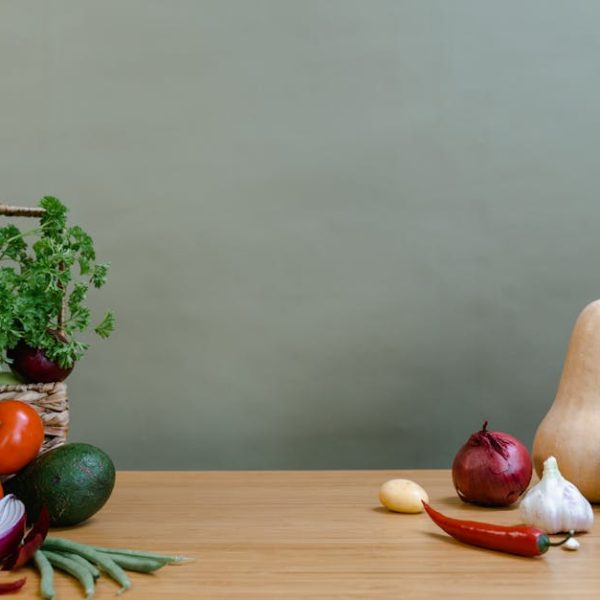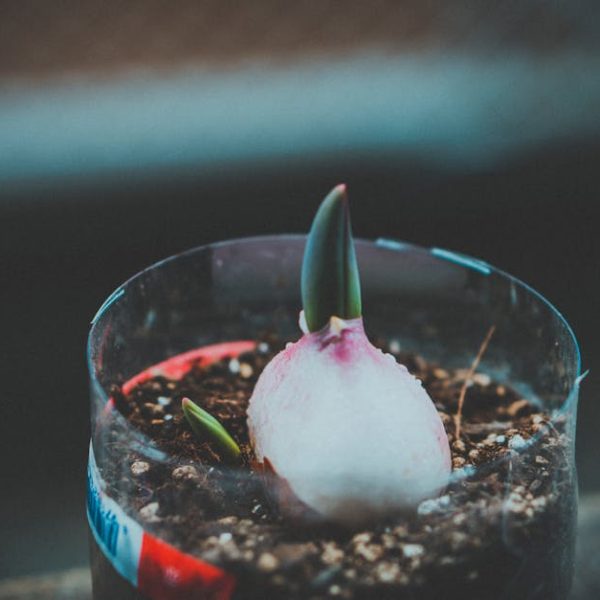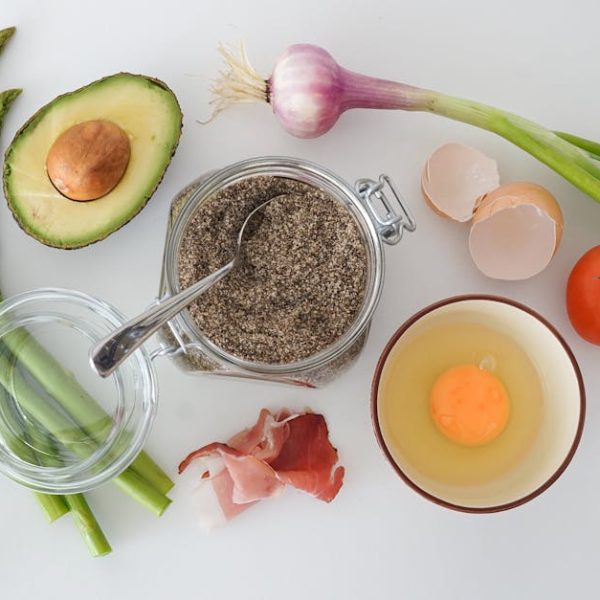When it comes to the vegetable aisle, two near-identical cousins often spark confusion: cauliflower and broccoli. While both these cruciferous vegetables hail from the same family, they boast distinct features, nutritional profiles, culinary uses, and even offer unique health benefits. So let’s embark on this journey of unpacking the key differences between cauliflower and broccoli.
Physical Characteristics and Varieties
Identifying cauliflower and broccoli might seem clear-cut at first glance. Cauliflower, typically white, sports a compact head (or curd), surrounded by thick, green leaves. Broccoli, striking with its green hue, features a floret-laden stalk and slightly darker leaves. Yet, these vegetables are not limited to these common forms.
Cauliflower may surprise you with a stunning array of varieties. Intriguing versions such as the lime-green Romanesco, with its fractal spirals, or the vibrant purple Graffiti variety, bring a pop of color to your plate. Meanwhile, broccoli comes not only in the regular green form but in the Summer Purple and the sprouting White Sprouting varieties too. These variations offer a delightful spin to these familiar veggies and add a new dimension to their culinary uses, a point we’ll return to later.
Nutritional Values
Despite their outward differences, both broccoli and cauliflower are nutritional powerhouses. They’re low in calories but brimming with vitamins, minerals, and antioxidants. Broccoli takes the lead, particularly in the case of vitamins C and K, providing 135% and 116% of the respective daily requirements in a single cup.
Cauliflower isn’t far behind though. This veggie packs in impressive amounts of Vitamin C (about 77% of the daily requirement), and some B vitamins, particularly folate and B5. Moreover, it’s worth noting that while broccoli has slightly more protein, cauliflower has fewer carbs, a point often highlighted in low-carb diets.
Pro tip: To retain their nutritional values, aim to steam these veggies rather than boiling them.
Culinary Uses
Cauliflower and broccoli aren’t just nutritional powerhouses; they’re culinary chameleons too. They can be cooked using various methods, like roasting, stir-frying, steaming, grilling, or even eating raw.
Broccoli, with its distinct, slightly bitter flavor, can add a crunch to salads, a hearty dimension to soups, or serve as a vibrant side dish when roasted. Its stalks and florets cook at different rates, though, so adding them at varying cooking stages ensures an evenly cooked dish.
Cauliflower, with its mild, slightly nutty flavor, can subtly adapt to various culinary creations. From creamy soups to roasted sides, pickles to pizza crusts, it’s versatility personified.
Cooking Checklist:
- Don’t overcook these veggies; it makes them mushy and reduces their nutritional value.
- For a nutritional boost, use the leaves of both these veggies – they’re edible and delicious.
- Experiment with different spices – these veggies readily soak up flavors.
These nutritional powerhouses are also associated with a plethora of health benefits, which we will explore next.
Health Impacts
The consumption of both cauliflower and broccoli can lead to significant health improvements. Their high fiber content assists in healthier digestion and weight management, while their rich vitamin profile boosts immunity.
Broccoli in particular, with its high antioxidant content, helps fight inflammation and reduces the risk of chronic diseases. It has been found to support heart health, help control blood sugar, and even aid in the prevention of certain cancers.
Cauliflower, on the other hand, stands out with its choline content, a nutrient that many people lack. Choline is essential for learning, memory, and maintaining a healthy metabolic rate. Plus, its high vitamin K content can assist with bone health, while its sulforaphane content shows promise in heart disease and cancer prevention.
Pros and Cons:
| Broccoli | Cauliflower | |
|---|---|---|
| Pros | High in vitamins C & K, rich in antioxidants, beneficial for heart health and diabetes control | High in Choline, good for brain health, beneficial for bone health and metabolic rate |
| Cons | Possibility of mild gas and bloating due to high fiber content | Possibility of mild gas and bloating due to high fiber content |
Pro Tip: Incorporate these vegetables into your daily diet. Mix them in salads, roast them for a side dish, or blend them into soups for a nutritional punch.
Farming and Seasonality
Cauliflower and broccoli share more than just their shape and family. These cool-weather crops thrive in similar farming conditions and prefer a well-draining soil, full sun exposure, and regular watering.
Broccoli is more cold tolerant and can withstand a light frost, which might damage cauliflower. That’s why you might find broccoli constantly available, while cauliflower, typically a fall crop, can be a bit more elusive.
However, these differences don’t discourage home growers. Both have become popular choices in backyard gardens and urban farming setups. They offer edible florets in less than two months, and their cut-and-come again nature means you can continue to harvest for weeks.
Pro tip: If you’re interested in growing these vegetables at home, remember to water them regularly, maintain a nutrient-rich soil, and monitor for pests such as caterpillars and aphids. This can be a fun project with a nutritious reward at the end!
And let’s not forget that growing these power-packed veggies yourself connects you to your food source and can further elevate your appreciation of these cruciferous favorites. Speaking of appreciation, let’s learn how to select and store these veggies for maximum freshness and flavor. This will be our focus in the concluding part of this vegetable tale.
Key Takeaway:
- Both cauliflower and broccoli are cruciferous vegetables with different features, nutritional profiles and health benefits.
- They come in a variety of colors and shapes, bringing a vibrancy and variety to meals.
- While broccoli is particularly rich in vitamins C and K, cauliflower is abundant in Vitamin C, B vitamins and choline.
- Both vegetables are versatile in cooking and can be used in a wide range of dishes.
- The high fiber content, vitamins, and antioxidants found in these vegetables contribute to improved digestion, immunity, heart health, and potentially cancer prevention.
- Strong similarities exist in farming conditions for both, though broccoli is more cold-tolerant.
Continue indulging in a variety of cauliflower and broccoli. Their beneficial nutrients, delightful flavors, and versatility in the kitchen make them an excellent choice for daily consumption. Remember, with the right cooking methods, you will not only relish their taste but also maximize nutrient retention. Embrace these power-packed veggies and feel the positive shift in your health.
FAQs
Q: What is Romanesco Cauliflower?
A: Romanesco cauliflower, also referred to as Roman cauliflower, is a unique variety of cauliflower that caractherized by a visually attractive, fractal form with lime-green colour.
Q: Is broccoli or cauliflower better for a low-carb diet?
A: While both are excellent, cauliflower is generally seen as preferable due to a lower carbohydrate content compared to broccoli.
Q: Are there any negative side effects to consuming broccoli or cauliflower?
A: Some people may experience mild gas and bloating due to the high fiber content in both broccoli and cauliflower. You may want to consume these vegetables in moderation if you have a sensitive stomach.
Q: Can I eat the leaves of broccoli and cauliflower?
A: Absolutely, the leaves of both broccoli and cauliflower are edible and can be cooked or eaten raw just like the florets.
Q: Are broccoli and cauliflower suitable for home gardening?
A: Yes. With full sun, regular watering, and a fertile soil, you can successfully grow these nutrient-rich veggies in your home garden.
We invite you to share this comprehensive guide on cauliflower and broccoli with your friends and family. For more insights and advice on other food items and wellness, feel free to explore other posts on our site.






